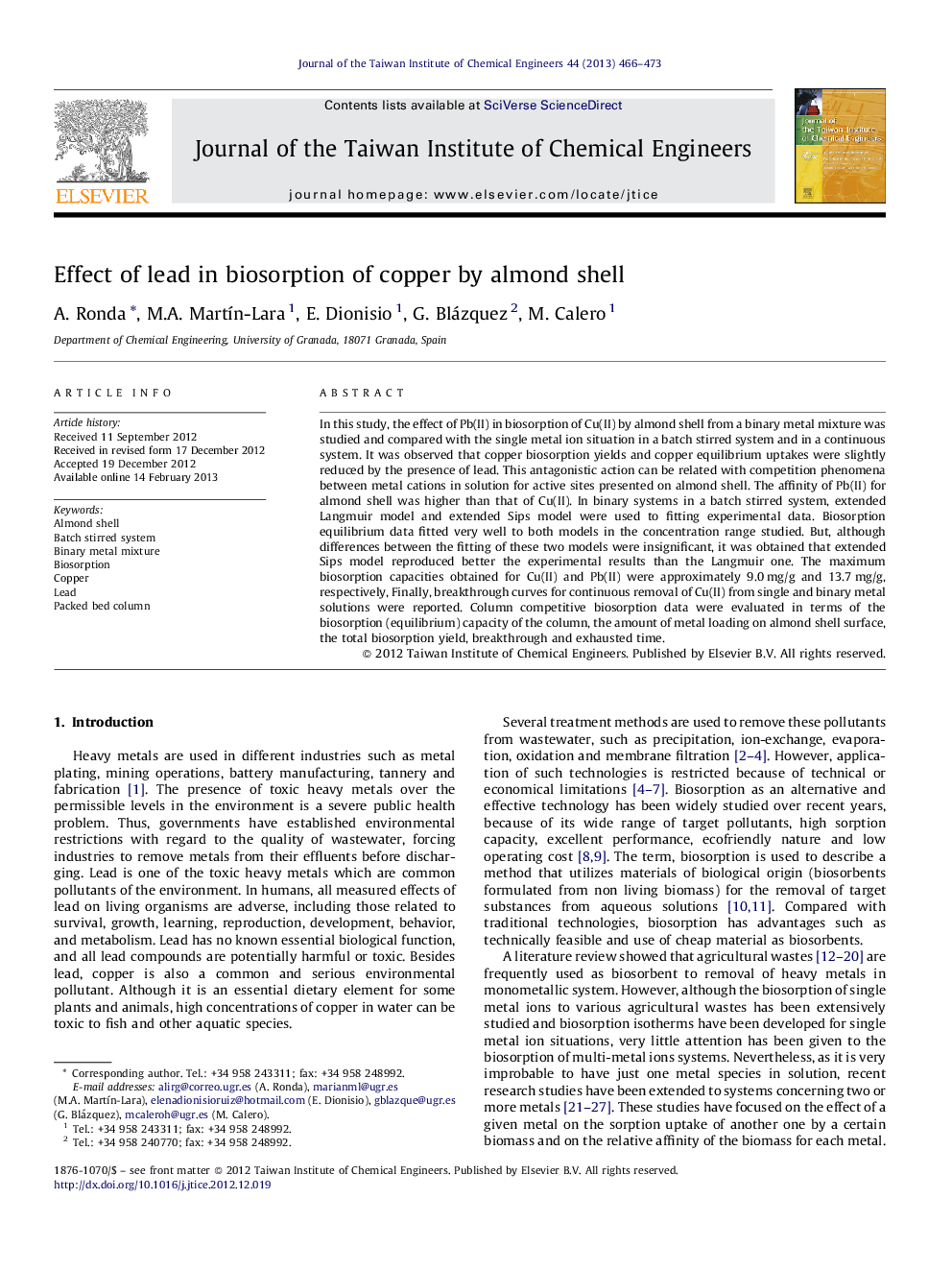| Article ID | Journal | Published Year | Pages | File Type |
|---|---|---|---|---|
| 691125 | Journal of the Taiwan Institute of Chemical Engineers | 2013 | 8 Pages |
In this study, the effect of Pb(II) in biosorption of Cu(II) by almond shell from a binary metal mixture was studied and compared with the single metal ion situation in a batch stirred system and in a continuous system. It was observed that copper biosorption yields and copper equilibrium uptakes were slightly reduced by the presence of lead. This antagonistic action can be related with competition phenomena between metal cations in solution for active sites presented on almond shell. The affinity of Pb(II) for almond shell was higher than that of Cu(II). In binary systems in a batch stirred system, extended Langmuir model and extended Sips model were used to fitting experimental data. Biosorption equilibrium data fitted very well to both models in the concentration range studied. But, although differences between the fitting of these two models were insignificant, it was obtained that extended Sips model reproduced better the experimental results than the Langmuir one. The maximum biosorption capacities obtained for Cu(II) and Pb(II) were approximately 9.0 mg/g and 13.7 mg/g, respectively, Finally, breakthrough curves for continuous removal of Cu(II) from single and binary metal solutions were reported. Column competitive biosorption data were evaluated in terms of the biosorption (equilibrium) capacity of the column, the amount of metal loading on almond shell surface, the total biosorption yield, breakthrough and exhausted time.
► Biosorption of lead and copper by almond shell, in single and binary systems was investigated in batch and continuous mode. ► Competence between metal ions for the same active sites of the biomass takes place in binary systems. ► Lead had more affinity for almond shell than copper ions. ► The most appropriate model for reproducing experimental results in batch systems was the extended Sips model. ► Breakthrough curves for continuous removal of Cu(II) from single and binary metal solutions were also reported.
